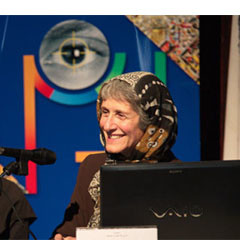Importance of Photojournalism: 30 Years in Iran
The medium of photography is unique in its ability to capture reality. While that is less true of modern day photography with its ability to be altered, edited, and selectively shot, photographs are none the less imprints of something real. The power of a photograph can move people to see and feel things in new ways, different ways, and ways they never imagined. It allows us to see people, places, and things that are out of our immediate reach. Fashion photography shows us the beautiful and desired. Travel photography allows us to roam the world without ever having to leave our home. Personal photography enables us to capture our favorite moments and physically immortalize them. Last but not least, photojournalism opens the doors between borders, cultures, and governments. Photojournalism can range between political to historic. Some photojournalism is even accidental, unaware of its impact or importance. If one was to define it, you could say it is a form of journalism that uses photography to tell a story.
In the case of U.S photojournalist Randy Hope Goodman, she has traveled to Iran several times throughout her lifetime in order to photograph citizens and their daily lives. By going to Iran at variously different periods of time, she was able to capture a multifaceted view of this country.
Her first time visiting Iran was in 1979 during the post-revolution period. She was there when a group of students seized the U.S embassy in Tehran. On another visit, she got the opportunity to tour the Iran-Iraq war zone, which led her to the most exclusive liberty of photographing Imam Khomeini, the founder of the Islamic Republic of Iran. She proudly notes that she was the only American photojournalist to ever photograph Khomeini. Most of her other subject matter revolved around soldiers as well as civilians in their daily lives and how they were impacted during the Iran-Iraq war and the Islamic Revolution. After 30 years since her first visit, Goodman is returning back to Iran to take photographs and compare the past and present. Whether this project will be on going for the journalist, or this trip will close the series, this body of work that spans across 30 years of Iranian history will be iconic in its nature and content.
Photojournalists like Goodman are the reason people from all different parts of the world can be represented and no longer kept invisible to the public sphere. Her work allows us access to a part of the world that some of us may never see. Some journalists risk and dedicate their lives to their work, making sure that the truth is represented. It is their bravery that gives their work its meaning and honesty.
Goodman hopes to one day turn her body of work into a book. We cannot be sure what story this book will tell, but we can be sure that it will be one we do not want to miss.
Click here to view Goodmans’ images of Iran

